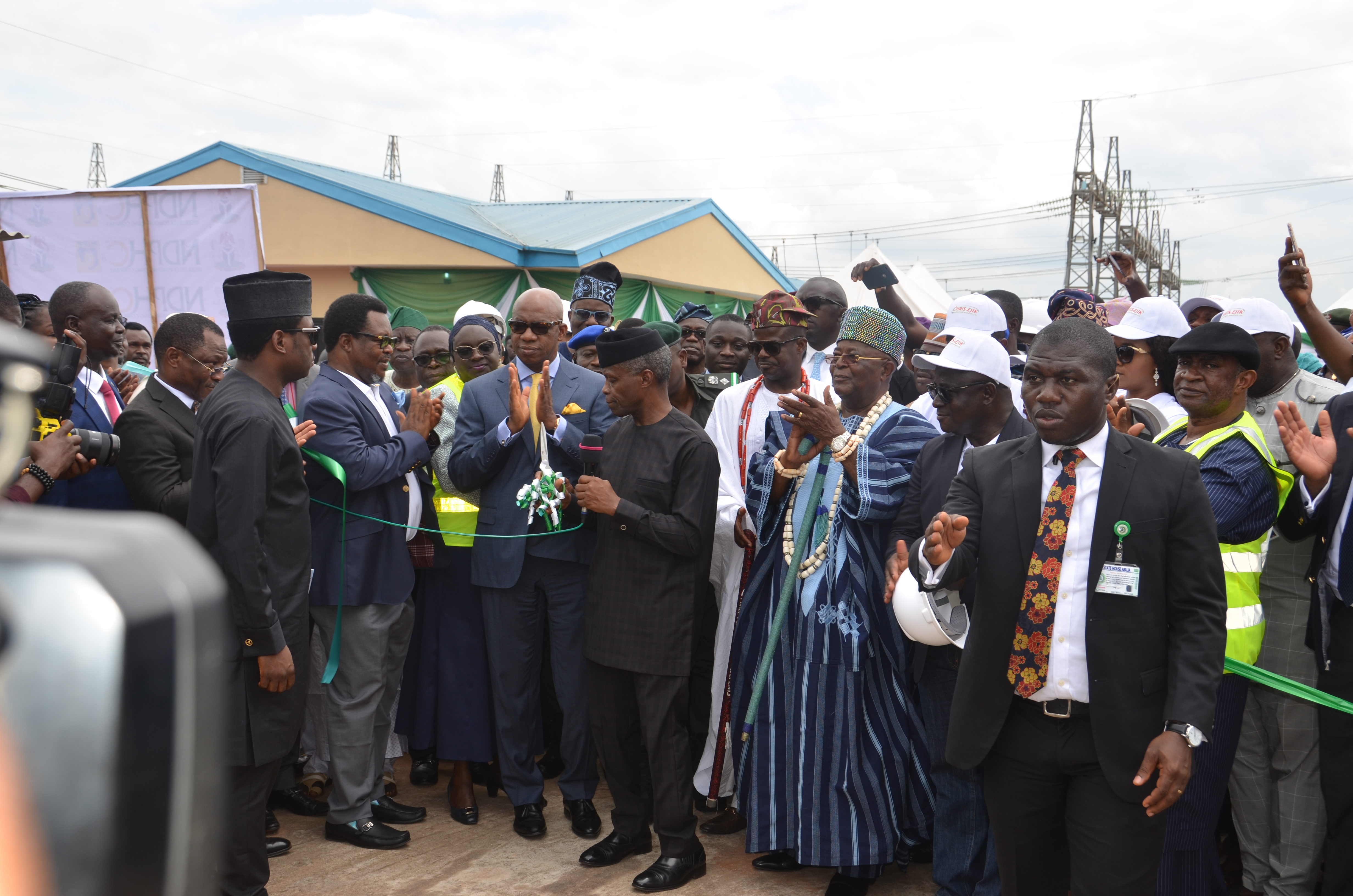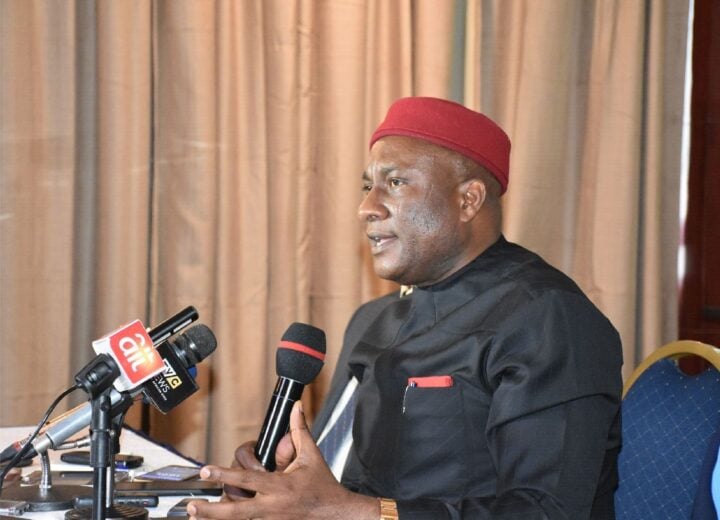- Built 350 injection substations with a combined capacity of about 3540MW
- Enhancing national grid with over 22,000,000kWHr of energy daily
The Niger Delta Power Holding Company Ltd, Nigeria’s generation, distribution and transmission infrastructure backbone and provider, is a national pride and one paradigm of a successful government’s incorporated limited liability company delivering stellar services in line with its mandate.
Its mandate is clear and unmistakable: to manage the power projects tagged, “ The National Integrated Power Projects (NIPP)’’, a power intervention initiative involving the construction of seven (and later 10) medium-sized gas-fired power plants and associated gas infrastructure, and the critical transmission infrastructure needed to evacuate the added power into the national grid.
Since the inception of President Muhammadu Buhari administration in 2015 and notably in 2019, NDPHC has taken the country to “next level’’ of re-engineering its operations with the attendant results of pulling the nation out of seemingly intractable power outage and collapse of power infrastructure in the country.
In line with the vision of President Buhari, it has recorded and still achieving milestones in incremental power in Nigeria.
Notably, the intervention of NDPHC is in three mainstream power sectors — generation, transmission and distribution.
When President Buhari appointed a new management team for the company in June 2015 as one of the set appointments he made, little did he know that they will an impetus and strong force in turning its fortunes around.
Following its inauguration, the NDPHC team headed by Mr Chiedu Ugbo, the Managing Director/CEO, with Engr. Ifeoluwa Oyedele as the Executive Director Engineering and Technical Services and Mallam Shehu Babayo the Executive Director Finance and Administration, immediately set off at a round pace with their agenda in focus.
The management was able to accomplish impressive and sustainable what is called incremental power in the sector for the country, a concept statement well articulated by the immediate past Minister of Power, Works and Housing, Mr Babatunde Fashola, in the three areas of generation, distribution and transmission. And since the new Minister of Power, Saleh Mamman, took over, he has focalized the projects with scrupulous supervision.
As at 2019 June, NDPHC had completed the following projects:
1. GENERATION
· Generation has
· The eight of the ten (10) power plants in the NIPP portfolio, along with associated gas transmission metering/receiving infrastructure projects to support commercial operation, have been commissioned and connected to the national grid contributing over 22,000,000kWHr of energy daily subject to availability of gas fuel.
· The NDPHC has continued to operate these power plants in the interest of the Nigerian economy, despite undesirable security challenges and an accumulated debt owed it by the electricity market. –NDPHC contribution represents over 40 per cent of power requirement in the grid despite the huge debt owed NDPHC by the Electricity Market.
· Many of the NIPP power plants on the national grid also provide ancillary services like spinning reserve to support the system operations, a contribution critical for stabilizing the national grid.
· The NPDHC has over 3000MW of generation capacity availability for deployment if the grid permits and this represents the best opportunity for the rapid improvement of power supply to the teaming Nigerians. It is important to note that completed power plants include 750MW Olorunsogo II, 450MW (Ogorode)Sapele, 434MW Geregu II, 450MW Omotosho II, 450MW Ihovbor, 450MW Alaoji, 563MW Calabar and 225MW Gbarain.
· Imminently completed ones include 225MW Omoku, 338MW Egbema and 530MW Alaoji steam machines
2. TRANSMISSION
· NDPHC has completed 2,194Km of 330kV transmission lines and 887km of 132kV transmission lines. A total of ten (10) new 330/132kV substations and seven (7) new 132/33kV substations have also been completed with several other existing substations significantly expanded thereby adding 5,590MVA and 3,493MVA capacity at 330kV and 132kV levels respectively to the national grid.
· NDPHC’s contribution to the Transmission grid system has transformed the hitherto radial 330kV/132kV grid into a more robust grid system with significant provision of alternative power flow routes which now serve as redundancies and which has resulted in a more reliable and stable National grid.
· Of note in these respects are the commissioning of the over 220km long 330kV Double Circuit (DC) lines providing alternative supply route into Abuja and the FCT from Geregu, through a new Lokoja substation, a new Gwagwalada substation into the existing Transmission Company of Nigeria’s (TCN) Katampe and Apo substations with several significant expansion works on existing substation developments along this route.
· There is also the construction of a 12-circuit Switching Station at Ikot Ekpene which serves as a hub for marshalling power evacuated from the power plants based at Calabar, Afam, Alaoji and Ikot Abasi. From this hub a total of over 800km long Double Circuit lines emanate as a Power backbone to flow power generation to Jos and the North East through Ugwuaji and Makurdi in Enugu and Benue States, respectively.
· With the commissioning of about 95% of this grid backbone in 2016, the Nigeria transmission Grid bid a firm and final goodbye to the radial grid era and entered a new hitherto unattainable level of grid security, reliability and stability that seemed elusive since the commencement of Nigerian grid operations in 1969.
3. DISTRIBUTION
· In the electricity distribution segment, NDPHC plays important role towards enhancing the capacity of electricity distribution infrastructure
· NDPHC has constructed and commissioned over 350 injection substations with a combined capacity of about 3540MW across the length and breadth of this country. NDPHC has further constructed about 2,600km of 11kV and 4,600km of 33kV distribution lines for improving access to electricity and quality of power supply to consumers.
· It has also enhanced distribution capacity by the installation of 25,900 Completely Self-Protected (CSP) distribution
· The 296 Distribution projects which included Injection Substations, 33kV lines, 11kV lines and associated HVDS network are embedded within the existing networks of the 11 Distribution successor companies of Power Holding Company of Nigeria (PHCN). As such, the Distribution Companies are fully involved in the commissioning and integration of the new facilities into existing networks.
In addition, the company has also embarked on some 100 projects across the country under its Distribution Intervention Projects, most of which are now completed with attendant impact of raising electricity supply to Nigerians. Today virtually every parts of the country except areas experiencing localized distribution infrastructure problems enjoys at least 10 to 18 hours of electricity per day while in some cases 24 hours supply.
NDPHC’s intervention followed low coverage/penetration of initial distribution projects, extended requests from host communities to NDPHC power stations, reconstruction of power infrastructure vandalised or damaged due to activities of vandals or insurgency, request from critical stakeholders including state governors, legislators, local governments, government agencies, community leaders,
Also, the distribution value chain has received a boost with the construction of injection substations capacity added 4,082.5MVA, construction of 33kv of about 2, 643km, construction of 11kV of about 4,760km and provision of distribution transformers (100KVA,200KVA,
Recently, NDPHC also Completed Distribution Substations (SS) & Lines as follow:
· 1x15MVA, 33/11kV Inj SS, Tambuwal, Sokoto State
· 1x15MVA, 33/11kV, 1X7.5MVA Inj SS, Fegge, Anambra State
· 1X7.5MVA, 33/11kV Inj SS, Potiskum, Yobe State
· 1X15MVA, 33/11kV Inj SS, Gagi, Sokoto State
· 1×7.5MVA, 33/11kV Inj SS. Otta, Ogun State
· 1X15MVA, 33/11kV Inj SS, Angwan Dosa, Kaduna Stat
· 2×7.5 MVA, 33/11kV Inj SS, Lamingo, Plateau State
· 2X15MVA, 33/11KV Inj SS, Zaria Rd, Jos
· Construction of 33kV line from Oke Aro TS to Mowe SS
· 2x15MVA, 33/11kv Injection SS, Asaba, Delta State
· 2x15MVA, 33/11kV Injection Substation at Okene;
· 2×7.5MVA, 33/11kV Substation at Kabba;
· 2x15MVA, 33/11KV at Confluence Beach; & and
· 1×7.5MVA, 33/11KV at Felele all in Kogi State.
On gas supply, NDPHC completed several gas assets including
On solar energy, NDPHC had in January 2017 launched the Solar Home Systems (SHS) project which is anchored on the Presidential Initiative on Rural Solar Home Lighting Systems aimed at extending power to rural communities across the country which had no access to electricity from the national grid.
Tagged, “NDPHC Beyond the Grid”, the solar projects are being implemented in some rural communities in the six geo-political zones.
For instance, the company has deployed about 200 units of the SHS as pilot programme at Wuna. The beneficiaries of the 20,000 units were among the already identified communities of the 19 Northern states while NDPHC’s solar project is also directed at re-activating 1,073 solar powered boreholes to provide access to clean water.
The company was able to surmount some challenges facing it between 2015 and now which include shortage of gas to the NIPP Power Stations in the Western Delta Ogorode, Benin (Ihovbor), Omotosho and Olorunsogo, inadequate transmission capacity to evacuate power from the Eastern Delta plants, quick completion of the 12 circuit 330kV Ikot-Ekpene Switching Station and the dual circuit 330kV transmission lines from the Alaoji and Calabar Power Stations as well as the completion of the first circuit (line2) of the Ikot-Ekpene to Ugwuaji four circuit 330kV.
Others are inadequate gas pipline infrastructure in the Eastern Delta (Alaoji and Calabar), completion of the NOPL by Total for gas supply to Alaoji Power Station, completion of the Seven Energy dedicated pipelines from Uquo to Calabar.
NDPHC, however, commended the Federal Government’s resolution of the Niger Delta crisis which has led to improvement in gas supply to the power stations in this western flank.
In spite of security challenges and huge debts of N121 billion owed owed it by the electricity market, the company has continued to operate the power plants in the interest of the Nigerian economy.
On its future projections NDPHC believes that its potential role in the immediate future power issues presents new challenges and immediate opportunities for growth particularly increasing needs for more investments in the power sector.
However, having played a pivotal role in the current increase in installed capacity of close to 13GW in the last ten years, it is hoped that NDPHC will continue as part of its medium-term to long-term vision to play a role in end-to-end infrastructure development in the sector.
With the next set of projects that will further improve capacity in generation and networks (in collaboration with the State-owned Transmission Company of Nigeria), NDPHC will continue to maintain its relevance as infrastructure provider in the nation’s power sector.
On a note of accomplishment and not as failed enterprise, it is heartwarming not know that at macro level, the power sector with the fillip provided by NDPHC has made a remarkable leap with available generation capacity of more than 7,000MW, enhanced transmission capacity that can wheel about 7,000MW and a consumption level gradually tilting towards a high level through various strategies by the managers and operators in the distribution segment of the power value chain.
Add a comment






